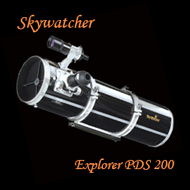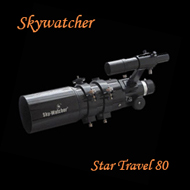| HOME |
|
An optical telescope is a telescope which is used to gather and focus light mainly from the visible part of the electromagnetic spectrum to directly view a magnified image for making a photograph or looking night sky. There are three primary types of optical telescope: refractors, reflectors, and catadioptric. A reflecting telescope is an optical telescope which uses a single or combination of curved mirrors that reflect light and form an image. Although reflecting telescopes produce other types of optical aberrations, it is a design that allows for very large diameter objectives. Almost all of the major telescopes used in astronomy research are reflectors. Reflecting telescopes come in many design variations and may employ extra optical elements to improve image quality. All refracting telescopes use the same principles. The combination of an objective lens and some type of eyepiece is used to gather more light than the human eye is able to collect on its own, focus it, and present the viewer with a brighter, clearer, and magnified virtual image. The objective in a refracting telescope refracts or bends light. This refraction causes parallel light rays to converge at a focal point. Refracting telescopes can come in many different configurations to correct for image orientation and types of aberration. Catadioptric telescopes are telescopes that combine specifically shaped mirrors and lenses to form an image. This is usually done so that the telescope can have an overall greater degree of error correction than their all lens or mirror counterparts with a consequently wider aberration free field of view. Their designs can have simple all spherical surfaces and can take advantage of a folded optical path that reduces the mass of the telescope, making them easier to manufacture. Telescope Parameters -- Aperture "D": this is the diameter of the main lens or mirror. -- Focal Length "F": this is primary focus of objective lens or main mirror. -- Focal Length "f": this is secondary focus of eyepiece or camera focus. -- Photographic speed or "f/": this is the ratio f/ = F/D. -- Resolving: it is ability to make us see small details and see sharp images. -- Limiting value: max. apparent magnitude of a celestial body that is detectable. -- Field of view: this is the circle of sky visible through the eyepiece or camera. |


